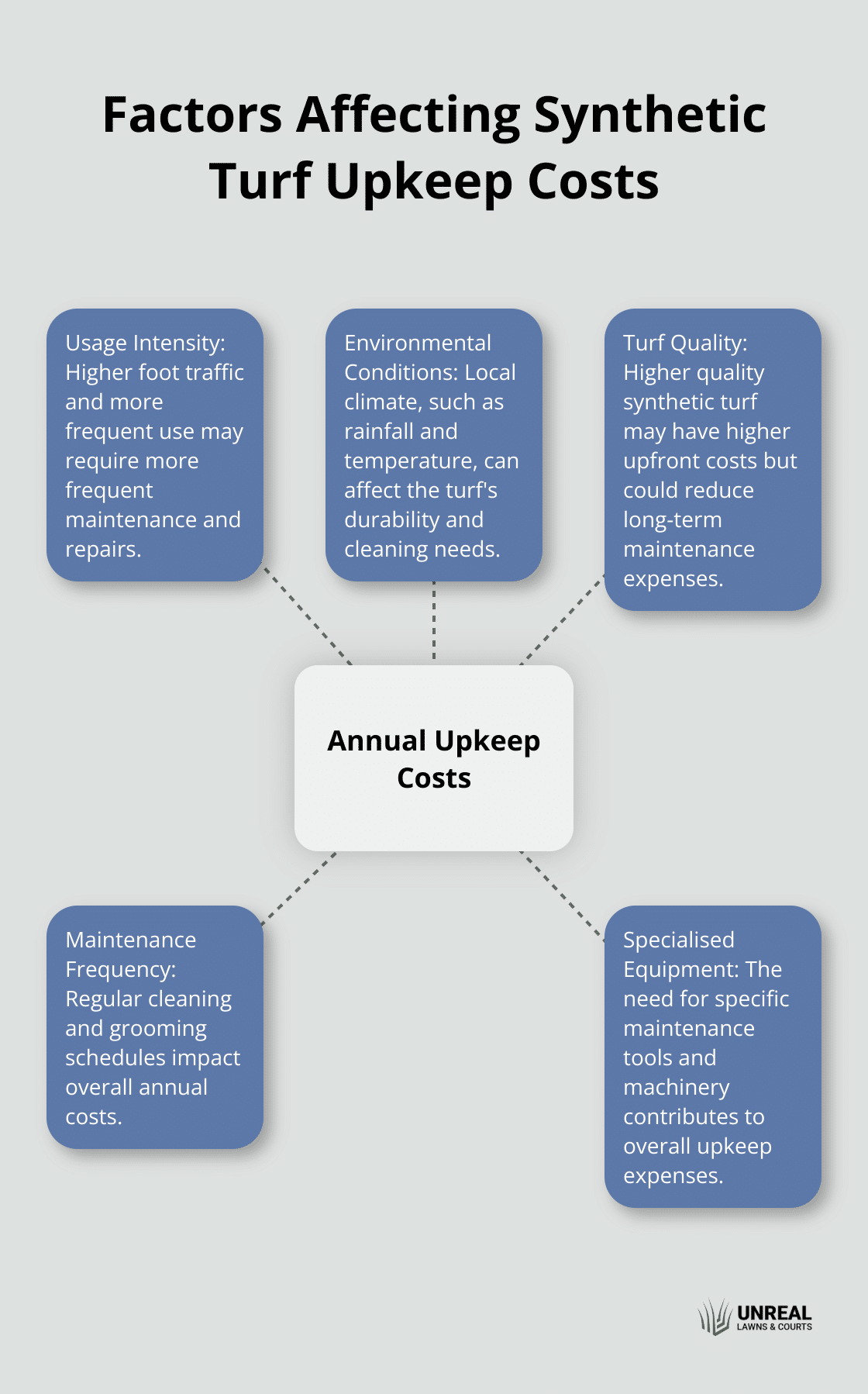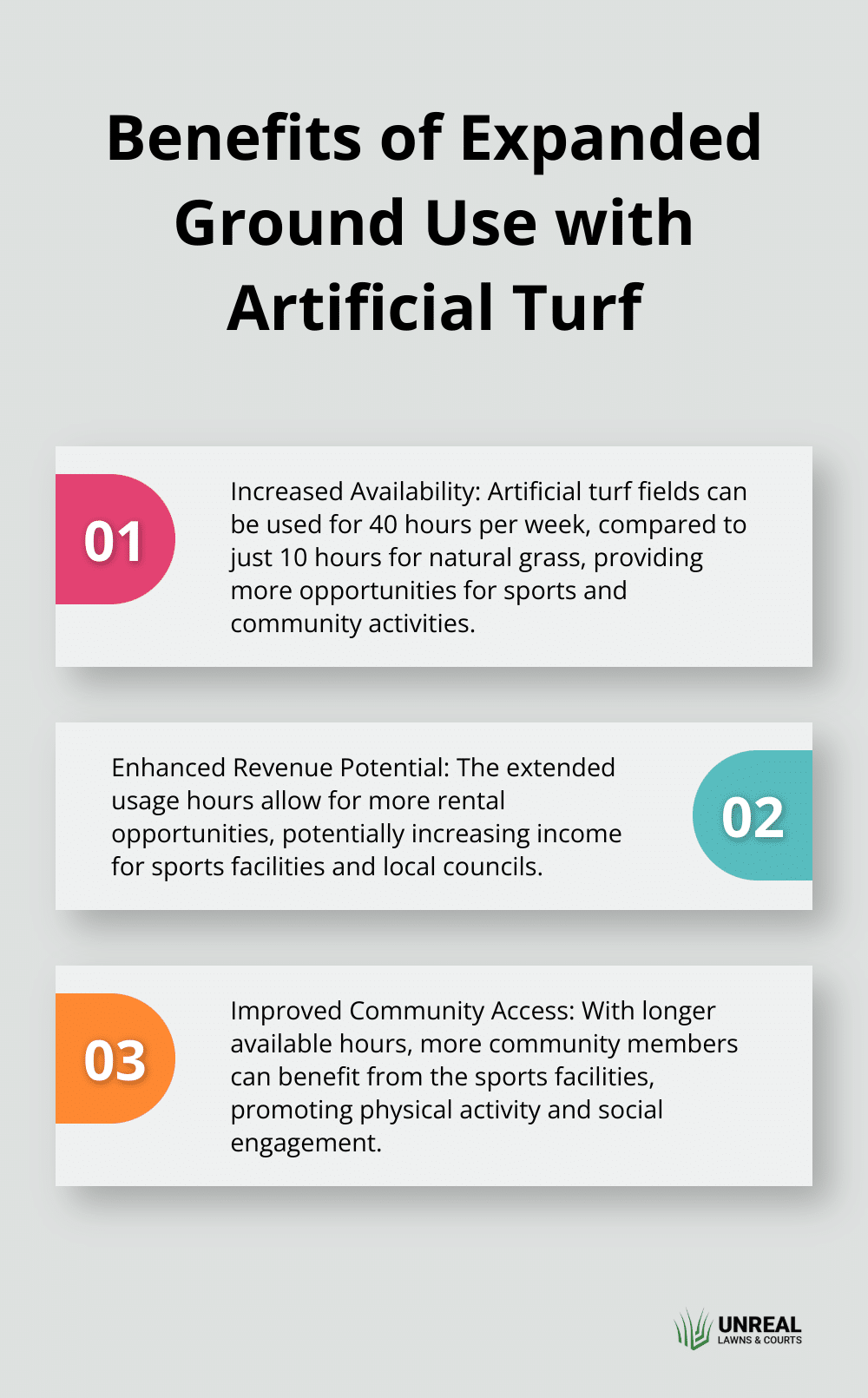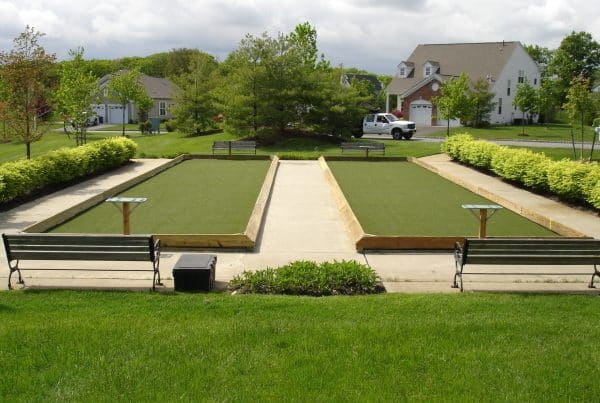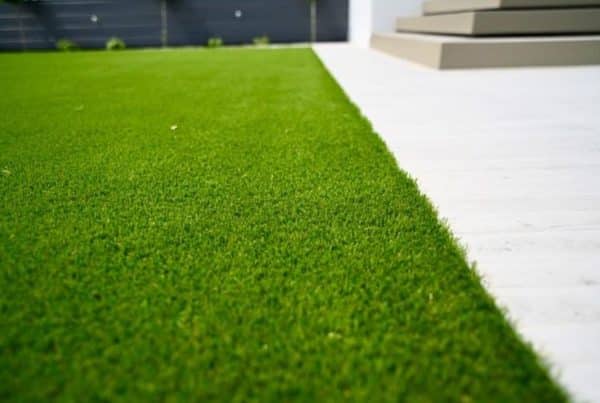At Unreal Lawns & Courts, we’ve witnessed a remarkable shift in New Zealand’s sports landscape. Synthetic turf is rapidly becoming the preferred choice for sports fields across the country.
This innovative surface is transforming how Kiwi athletes train and compete, offering benefits that natural grass simply can’t match. In this post, we’ll explore how sports field turf is revolutionising New Zealand’s sporting infrastructure and why it’s becoming a game-changer for players, clubs, and communities alike.
Why NZ Sports Fields Are Going Synthetic
The Synthetic Turf Revolution
New Zealand’s sports landscape is undergoing a dramatic transformation. Synthetic turf is rapidly replacing natural grass on sports fields across the country. This shift isn’t a mere trend; it’s a practical response to real challenges faced by sports facilities nationwide.
The Numbers Tell the Story
New Zealand Sports Turf Institute (NZSTI) is New Zealand’s only full-service sports surface consultancy group. This surge isn’t limited to professional venues. Local councils, schools, and community centres (recognising the long-term benefits) are all embracing artificial grass.
Weather-Proof Sports
New Zealand’s unpredictable climate has always posed challenges for sports organisers. Synthetic turf offers a solution to this persistent problem. These fields remain playable even after heavy rainfall, a feature particularly valuable in regions like Wellington and Auckland (known for sudden downpours).
Cost-Effective Long-Term Solution
The initial investment in synthetic turf may appear high, but the long-term savings are substantial. Synthetic turf makes sports fields available for more use.

Maximising Play Time
Synthetic turf allows for extended hours of play without risking field damage. This is a game-changer for sports clubs aiming to optimise their training schedules and hosting capabilities. The durability of these surfaces means they can withstand intensive use, day after day, without showing signs of wear and tear.
As more facilities experience these benefits firsthand, the synthetic turf revolution in New Zealand sports fields will likely continue to gain momentum. The next section will explore the specific advantages that synthetic turf brings to sports fields, from improved player performance to enhanced safety measures.
Why Synthetic Turf Outperforms Natural Grass
Synthetic turf has revolutionised sports fields across New Zealand, offering advantages that natural grass cannot match. This innovative surface transforms the way sports are played and managed in our country.
All-Weather Performance
Synthetic turf excels in various weather conditions. The New Zealand Sports Turf Institute reports that synthetic fields accommodate up to three times more playing hours compared to natural grass fields. This results in fewer cancellations and more consistent play, regardless of rain or shine.
In Wellington (where annual rainfall averages 1,249mm), local sports clubs report a 40% increase in usable playing time after switching to synthetic turf. This boost in availability enhances player experience and provides more opportunities for community engagement and revenue generation for sports facilities.
Unmatched Durability
The durability of synthetic turf surpasses that of natural grass. Synthetic turf proves highly durable, withstanding heavy foot traffic and various weather conditions. Its resilience makes it ideal for high-use areas.
Auckland’s North Harbour Stadium, which installed synthetic turf in 2014, now hosts numerous sports activities annually. Located in Albany on Auckland’s North Shore, North Harbour Stadium (formerly QBE Stadium) has become a versatile venue for various events.
Cost-Effective Maintenance
Synthetic turf significantly reduces maintenance costs compared to natural grass. The Sports Turf Association of New Zealand found that synthetic fields save up to 70% on annual maintenance costs compared to natural grass fields.
Enhanced Player Safety and Performance
Synthetic turf provides consistent playing conditions that enhance both safety and performance. The even surface reduces the risk of injuries caused by uneven terrain or unexpected divots. A study published in the Journal of Science and Medicine in Sport found that properly maintained synthetic turf reduces the risk of certain types of injuries by up to 20% compared to natural grass.
Furthermore, the consistent bounce and roll of the ball on synthetic turf allow for more precise play, particularly beneficial in sports like hockey and football. Many professional athletes report improved performance metrics when playing on high-quality synthetic surfaces.
The combination of durability, cost-effectiveness, and performance enhancement makes synthetic turf an invaluable asset for sports facilities of all sizes. As we explore the environmental and economic impacts of synthetic turf in the next section, we’ll uncover even more reasons why this technology continues to gain popularity in New Zealand’s sports landscape.
The Green Revolution: Synthetic Turf’s Economic and Environmental Edge
Synthetic turf transforms New Zealand’s sports landscape, offering significant economic and environmental benefits. This innovative solution addresses key challenges faced by sports facilities while promoting sustainability.
Water Conservation: A Game-Changer
Water scarcity concerns many parts of New Zealand. Synthetic turf provides a powerful solution to this problem. During wet seasons, artificial turf’s superior drainage capabilities prevent waterlogging. Most modern synthetic grass systems drain water efficiently, making them a practical choice for various weather conditions.
Eliminating Chemical Runoff
Traditional grass fields often rely heavily on pesticides and fertilisers to maintain their appearance and playability. These chemicals can harm local ecosystems and water quality. Synthetic turf eliminates the need for these harmful substances entirely. This reduction in chemical use not only protects local flora and fauna but also improves the safety of sports fields for players and spectators alike.
Long-Term Financial Benefits
The initial installation cost of synthetic turf may exceed that of natural grass, but the long-term financial benefits are substantial. Over a 10-year period, synthetic turf fields can save facility owners up to 50% in maintenance costs compared to natural grass fields. This includes savings on labour, equipment, water, and chemicals. Maximising Revenue Potential
Artificial-turf fields expand a ground’s use from 10 hours a week to 40 hours. This increased usage allows for more rental opportunities and greater access to sports facilities for local communities. However, it’s important to note that these fields can be expensive, with some councils approving significant budgets for their installation and maintenance.

Environmental Impact
The environmental benefits of synthetic turf extend beyond water conservation and chemical reduction. These fields reduce carbon emissions associated with regular mowing and maintenance of natural grass. Additionally, many synthetic turf products now incorporate recycled materials, further contributing to sustainability efforts. As environmental concerns grow, the eco-friendly aspects of synthetic turf (when properly sourced and installed) become increasingly attractive to facility managers and community planners.
Final Thoughts
Sports field turf has transformed New Zealand’s approach to sports infrastructure. This innovative surface offers unmatched durability, cost-effectiveness, and environmental benefits across various venues. Technological advancements continue to enhance the quality and performance of synthetic turf, solidifying its position as a key player in sustainable and efficient sports facilities.
The long-term advantages of reduced maintenance costs, increased playing time, and environmental sustainability make a strong case for investment in sports field turf. At Unreal Lawns & Courts, we have observed the positive impact of high-quality synthetic turf on sports fields throughout New Zealand. Our premium artificial grass solutions provide durable, low-maintenance surfaces that remain lush year-round.
Sports field turf stands ready to shape the future of New Zealand’s sporting landscape. It offers consistent, safe, and sustainable playing surfaces that redefine how we experience sports at every level (from professional stadiums to local community fields). The adoption of this innovative technology marks a significant shift in sports infrastructure, promising a brighter future for athletes and sports enthusiasts alike.





